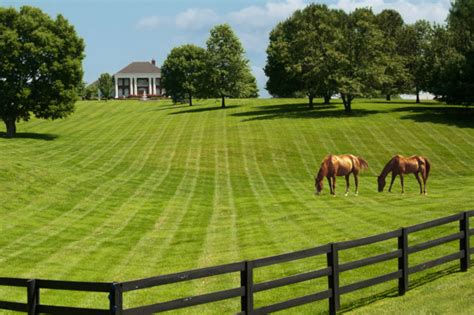Finding the Ideal Acreage for Your Equine Friend
Owning a horse is a rewarding experience, but it comes with significant responsibilities, especially when it comes to providing adequate living space. Finding the ideal acreage for your equine friend isn't just about having enough room for them to roam; it's about ensuring their health, happiness, and overall well-being. This comprehensive guide will help you determine the appropriate amount of land needed to provide your horse with a thriving environment.
How Much Land Does One Horse Need?
There's no one-size-fits-all answer to this question. The ideal acreage depends on several crucial factors:
- Horse's Size and Breed: Larger breeds naturally require more space than smaller ponies.
- Climate and Geography: Arid climates require more land for grazing than lush, green pastures. Terrain also plays a role; hilly land provides more space to explore than flat land.
- Management Practices: The intensity of grazing, the use of rotational grazing, and the provision of supplemental feed will significantly influence the required acreage.
- Number of Horses: Sharing pasture space changes the equation dramatically. More horses require more land to prevent overgrazing and ensure each animal has access to sufficient resources.
- Intended Use: A horse used for intense training and exercise might need more space than a horse primarily kept as a companion animal.
While some sources suggest a minimum of one acre per horse, this is often considered insufficient for optimal welfare. Many experts recommend at least two acres per horse, and more is always better, especially if you intend to rotate pastures to allow for regrowth. This allows for sufficient grazing, exercise space, and reduces the risk of parasite buildup.
What About Multiple Horses?
Having multiple horses significantly increases the land requirement. Overcrowding leads to competition for resources, increased stress levels, and potential health problems. Consider the following:
- Pasture Management: Effective pasture management techniques, such as rotational grazing, are essential with multiple horses to prevent overgrazing and soil erosion.
- Social Dynamics: Introducing horses to a shared space requires careful consideration of their temperaments and compatibility to minimize aggression and bullying.
- Water and Shelter: Ensure adequate water sources and shelter are available for all horses, considering their distribution across the pasture.
A general guideline suggests adding at least one additional acre per horse beyond the initial two-acre minimum. Therefore, two horses might ideally require four acres, three horses five acres, and so on. This guideline provides a margin of safety and allows for flexibility in pasture management.
What if I Don't Have Enough Land?
If you have limited acreage, consider alternative strategies:
- Pasture Rotation: This involves dividing your land into paddocks and allowing horses access to each paddock for a specific period before rotating them. This allows for pasture regrowth and reduces the risk of parasite infestation.
- Supplemental Feeding: If your pasture can't support your horses' nutritional needs, you'll need to supplement their diet with hay and grain.
- Off-Site Grazing: Explore possibilities of leasing additional land or collaborating with other horse owners to share pasture space.
How to Assess Your Land's Suitability?
Before acquiring land for your horse, assess its suitability:
- Soil Quality: The soil should be capable of supporting healthy pasture growth.
- Water Availability: A reliable source of clean, fresh water is critical.
- Fencing: Secure, durable fencing is essential to prevent escapes and injuries.
- Shelter: Adequate shelter from the elements should be available.
- Access to Veterinary Care: Ensure your location allows for easy access to veterinary services.
What are the Potential Legal Considerations?
Before purchasing property for your horses, consult with local authorities and legal professionals to understand zoning regulations and potential restrictions on land usage. These regulations often dictate the minimum lot size and animal keeping allowances.
In conclusion, finding the ideal acreage for your equine friend is a multifaceted decision that requires careful planning and consideration. Prioritizing your horse's well-being by providing adequate space, proper pasture management, and suitable facilities is paramount to their health and happiness. Remember that more land often equates to a happier, healthier horse, minimizing stress and maximizing their quality of life.

